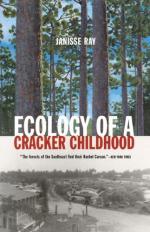
|
| Name: _________________________ | Period: ___________________ |
This test consists of 15 multiple choice questions and 5 short answer questions.
Multiple Choice Questions
1. In Chapter 3, Janisse describes her family's junkyard as ten acres of failed what?
(a) Machines.
(b) Goals.
(c) Memories.
(d) Plans.
2. At the hands of the tree farmers, the land was laid bare. What simile does Janisse use to describe its bare state?
(a) Bare as a possum's tail.
(b) Bare as a sand dune.
(c) Bare as a blank sheet of paper.
(d) Bare as a vulture's pate.
3. What does Dell, Janisse's brother, claim to have seen men stealing from the junkyard in the middle of the night?
(a) Windows.
(b) Copper wire.
(c) Radiators.
(d) Engines.
4. What constituted Janisse's and her brothers' very favorite game within the junkyard?
(a) Making believe they were car salespeople.
(b) Pretending to be paramedics saving car accident victims.
(c) Playing church.
(d) Chasing each other along the tops of salvaged cars.
5. What was the subject of Janisse's recurring daydream she had during church services?
(a) Being a bank robber.
(b) Having a very tiny real baby of her own.
(c) Running off to join the circus.
(d) Living in the forest as a hermit.
6. In what county in Georgia was Janisse raised?
(a) Grasslands County.
(b) Mason County.
(c) Fulton County.
(d) Appling County.
7. What did Frank's children begin to watch for as a sign that he was entering a manic phase of his mental illness?
(a) Displays of anger.
(b) Impulsive actions concerning his salvaging business.
(c) His tendency to talk for hours on end without listening to their replies.
(d) His inability to sleep.
8. How long did it take the family to travel to the nearest Apostolic Church, which was in the town of Brunswick?
(a) Thirty minutes.
(b) Two hours.
(c) Ninety minutes.
(d) One hour.
9. What type of bird was Clyde, the bird that Frank nursed back to health after finding it on the side of the highway with a broken leg and wing?
(a) A heron.
(b) A pigeon.
(c) A robin.
(d) A woodpecker.
10. Because Janisse was one of her grandfather Charlie's favorite grandchildren, what two skills did he teach her?
(a) How to play horseshoes and how to wrestle.
(b) How to fight and how to fish.
(c) How to find huckleberry patches and how to make a raft.
(d) How to play the piano and how to tie a good knot.
11. What is the oldest age to which longleaf pines can live?
(a) 500 years old.
(b) 200 years old.
(c) 1000 years old.
(d) 300 years old.
12. What traits does Janisse say are the two most elemental features of Frank's personality when she describes him in Chapter 7, Junkyard?
(a) Understanding and order.
(b) Patience and doggedness.
(c) Dexterity and compassion.
(d) Intelligence and kindness.
13. Though everyone was aware of Frank's predilection toward mental illness, what did everyone, including the police, agree was another possible cause of his first major nervous breakdown?
(a) He had not eaten for several days and it had affected his mental state.
(b) He suddenly remembered a particularly violent episode involving his father.
(c) His new friend spiked his lunch with LSD.
(d) He found out Lee Ada had been unfaithful.
14. In the Introduction, Janisse describes where she goes to find herself among what has been and what remains. Where is that place?
(a) The willow tree where she experienced her first kiss.
(b) Her grandmother's and grandfather's graves in the cemetery.
(c) The mouth of the Altamaha River.
(d) The swath of huckleberry bushes deep in the forest behind her childhood home.
15. What was the catalyst for the "opening" of Janisse's heart referenced in the chapter title How the Heart Opens?
(a) Her brother's decision to become a minister.
(b) Her fascination with the carnivorous pitcher plant.
(c) Her discovery of her love for painting.
(d) Her father's healing from his mental illness.
Short Answer Questions
1. What chore done before a thunderstorm does Janisse use in the Introduction as a metaphor for the Georgian people seeing everything coming before it happens?
2. Which of the following is an element of the dialect known as "Cracker speech"?
3. In Chapter 4, Built by Fire, what two natural elements does Janisse pit against one another in her personification-laden story?
4. How old was Frank when Charlie first talked him into partnering with him in the wrecking yard business?
5. For what reason did Frank throw out the family's television set when Janisse's little sister Kay was a baby?
|
This section contains 769 words (approx. 3 pages at 300 words per page) |

|




